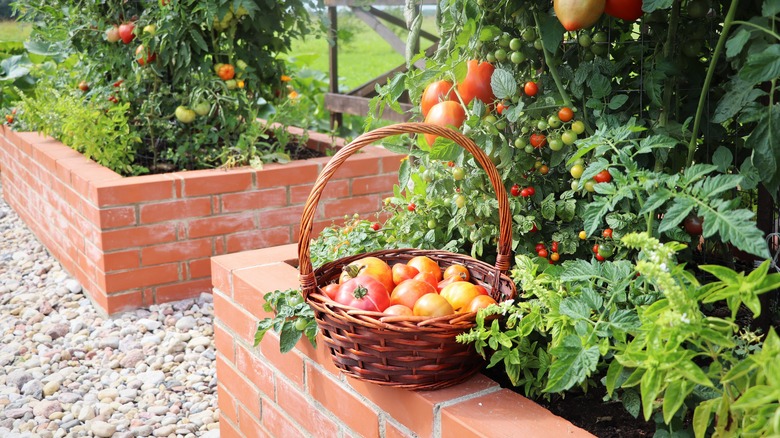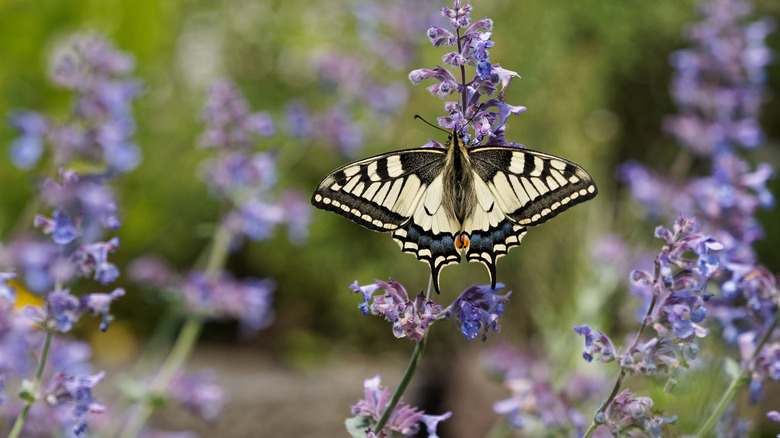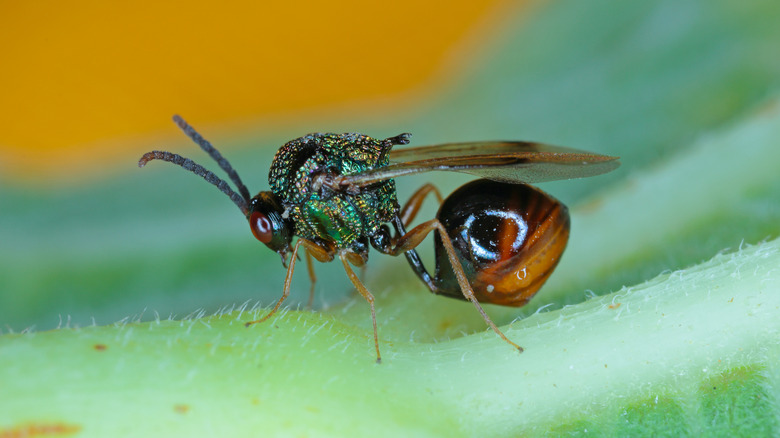The Perennial Plant You'll Want To Grow Near Your Garden Tomatoes
Tomatoes are a popular garden staple, but they often attract unwanted attention from various pests. This is where catnip comes in as your gardening hero. Known scientifically as Nepeta cataria, this perennial herb is a distinguished member of the mint family. Originally hailing from Eurasia, catnip has crossed oceans to naturalize in diverse terrains, and it's now a common sight in North American gardens. What makes catnip an exceptional companion plant for tomatoes goes beyond its pleasant aroma and striking appearance.
Firstly, catnip serves as a formidable repellent to those pesky insects that are ever so eager to sabotage your thriving tomato plants. Secondly, this unique herb has an incredible knack for attracting beneficial insects to your garden. By doing this, catnip helps establish a balanced ecosystem, creating a harmonious environment where natural predators control harmful pests. This allows your tomato plants to flourish in a healthier, more stable environment. As an added bonus, catnip offers you a greener, eco-friendly alternative to commercial repellants, which is particularly vital if you're committed to organic gardening practices and wish to avoid the use of chemical pesticides. But the benefits extend even further. Catnip is a resilient, drought-tolerant plant — it can thrive in various soil types (mostly in dry soil) and has a high tolerance for cold weather. In essence, integrating catnip into your garden isn't just a tactical move; it's a holistic approach to sustainable gardening.
Catnip deters pests that target tomatoes
Catnip is an invaluable ally in combating the diverse range of insects that threaten your tomato plants. Generally speaking, tomatoes are highly susceptible to various insects, each of which poses its own challenges that can seriously impair growth and yield. First on the list are aphids, small insects that suck the sap out of plant tissues, leading to distorted leaves and stunted growth. Spider mites are another concern; they also feed on plant sap, leaving tiny, visible, yellow spots on leaves. Then there are whiteflies, which, like aphids, extract the plant's juices and are also vectors for various plant diseases. Finally, there are the often-underestimated flea beetles. These small but exceedingly voracious insects wreak havoc by chewing small holes in the leaves, weakening the plant and ultimately leading to reduced yields.
In this challenging landscape, catnip emerges as a multi-faceted champion. When you strategically position catnip next to your tomato plants, the aromatic oils naturally disseminate throughout your garden, providing an invisible yet effective barrier against these pests. The linchpin of catnip's effectiveness is a unique compound called nepetalactone, a terpenoid that has been extensively researched and shown to be effective in repelling a broad array of pests. Nepetalactone operates by confusing or overwhelming the sensory perception of insects, making it exceedingly unpleasant for them.
The beneficial insects attracted by catnip
While catnip is excellent at keeping certain pests away from your tomatoes, it also plays a vital role in attracting beneficial insects, particularly parasitoid wasps. These tiny warriors are a boon for your garden as they feed on various pests, including the dreaded hornworms. Hornworms are large, green caterpillars that are notorious for devouring the foliage and fruit of tomato plants. These pests can strip your plants bare if left unchecked, significantly affecting your overall yield. Here's where the parasitoid wasps come in.
The female parasitoid wasp employs an intriguing strategy to ensure the survival of her offspring. Instead of directly killing the hornworm, she uses it as a living nursery for her larvae. She lays her eggs inside the hornworm, providing a source of nourishment for her soon-to-hatch young. When the eggs hatch, the larvae feed on the internal parts of the still-living hornworm, eventually killing it as they prepare to become adult wasps themselves. This cycle controls the hornworm population and increases the population of these beneficial wasps in your garden. All in all, you're essentially recruiting an army of parasitoid wasps to protect your plants by planting catnip next to your tomatoes. The scent and flowers of catnip are highly attractive to these wasps, so you're creating a welcoming environment for these natural predators to help keep your tomato plants safe.


